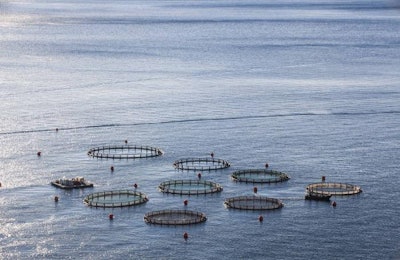
After deep COVID-19 dive, some aquaculture sectors could take years to recover, experts say
After a dramatic drop in demand during the novel coronavirus (COVID-19) pandemic, some sectors of the aquaculture industry have already begun to recover. Others, however, could take years to return to pre-COVID levels.
The pandemic brought rapid changes in demand and supply chain challenges to agricultural operations of all kinds, but aquaculture was particularly hard hit. And because of the uniquely diverse nature of the aquaculture industry, recovery could be far more uneven than for animal ag at large, according to a panel of experts assembled for an informational webinar last week by the U.S. Soybean Export Council.
Globally, aquaculture lost its two primary outlets during COVID-19: restaurants andfood service, and wet or other fresh markets. From January to March, some regions of China saw a 90-95% loss of fish sales, according to George Chamberlain, president of the Global Aquaculture Alliance.
China is further along in its recovery from the pandemic, and fish sales have begun to recover, Chamberlain said. But consumer behaviors have changed, with more Chinese households buying fish from retail outlets or even ecommerce companies. The supply chain, however, has lagged behind the recovery in demand. Restocking is delayed by about two weeks, Chamberlain said, due to restrictions on international air travel, and shipping costs are higher. As a result, he said fish prices have increased somewhat across Asia — but so too have costs associated with necessities like aquafeed.
Other countries where consumers buy and prepare more fish at home have seen a similar dynamic, Chamberlain said. In Egypt, Greece and Turkey, fish and seafood sales have only dropped about 10-15%, he said.
Although aquaculture has avoided the meatpacking backlogs seen in the U.S. cattle and pork industries, the potential loss of an outlet for fish products caused some producers to panic and sell their wares all at once, causing steep declines in prices, particularly in India and Ecuador, Chamberlain said.
When will prices recover?
Long term, the panel agreed, it’s not clear when prices for seafood, particularly for staples such as salmon and shrimp, will return to their historic norms.
Gorjan Nikolik, a senior analyst specializing in seafood for RaboResearch, said he expects salmon prices to recover by the end of the year. The salmon industry was in a good place before COVID-19 struck, he said, and enjoying a streak of high prices that had resulted in strong profits since 2016. So, although salmon prices took a hit, the decline had minimal impacts to the farmer despite salmon’s heavy reliance on the restaurant industry, which accounts for 50% of salmon demand. In the U.S, retail prices for salmon are down 40 cents per pound.
“This should be the bottom,” Nikolik said. “I don’t think there will be much more reduction.”
Shrimp, Nikolik said, is another story. The shrimp industry was already dealing with several emerging diseases and coming off shortages dating back to 2014, and had looked to 2020 as a year of potential recovery.
“The sector was gearing up for big supply,” Nikolik said, “and it doesn’t look good when you’re gearing up for big supply and suddenly the demand just disappears.”
Shrimp supply chains have also experienced more significant disruptions than other sectors. Producers in some countries have been unable to export product, and in some cases have struggled to restock. And while other sectors have begun to see demand return, that has yet to happen for shrimp, Nikolik said. He predicted that low prices could continue in the shrimp industry long enough to trigger industry contraction.
“This is not a price point that will allow the industry to recover the volumes of the past,” he said.
View our continuing coverage of the novel coronavirus (COVID-19) pandemic.









